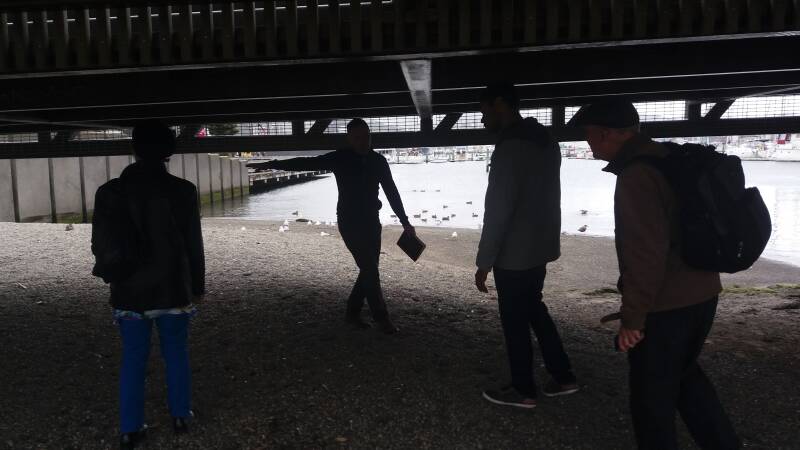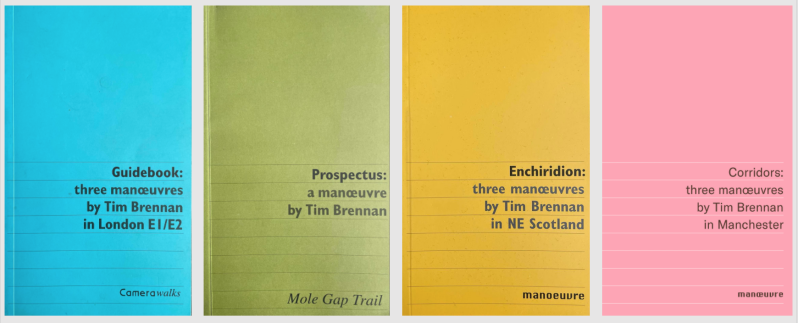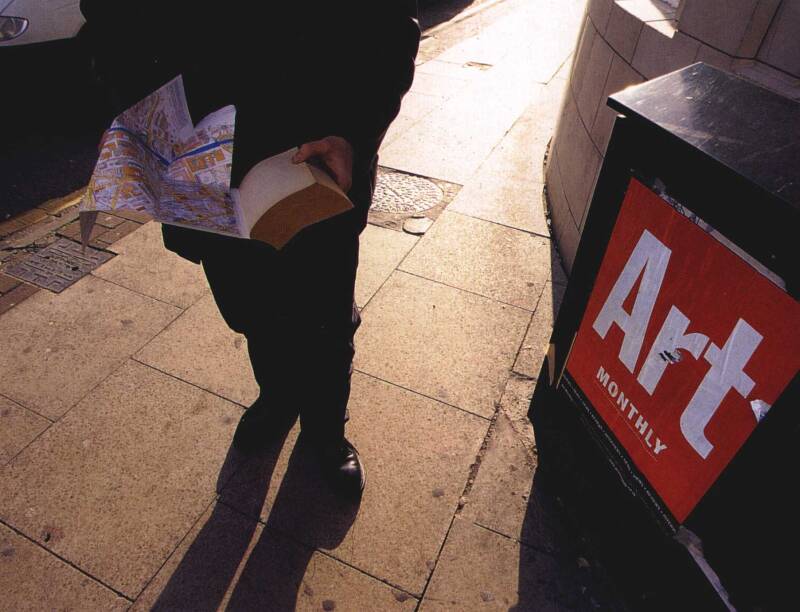Manoeuvre: Discursive Performance
The sociality of space, that makes it a place, is just the trace of human intentionality. Brennan (1999)
In the 1990’s Brennan began developing a methodology based on the guided walk form - the ‘manoeuvre’.
Each walk is built out of quotations which are recited to the group at stations along a predesigned route.
The walks surface as live performances and as guidebooks. Manoeuvres involved the traditional body centred approach to performance are disrupted. The body is de-centered in the manoeuvre. Attention is given to the details of a stopping point and the content of the text being read aloud. Each walk-work is a discursive performance

⟁ Museum of Angels (2003)
A landmark manoeuvre developed during Brennan’s residency at the British Museum. This guided walk and associated guidebook explored angelic figures across ten departments—reframing the museum as a site of ritual, residue, and symbolic convergence → Visit the Museum of Angels project page

Vedute Manoeuvre, (2011), 54th Venice Biennale, Piazzo San Marco and Gervesuti Foundation
Detail from manoeuvre showing a participant using manoeuvre guide itinerary consisting of reproductions of Caneletto paintings, quotations and a essay by poet and critical theorist Heather H. Yeung.
Brennan, T et al. (2011). Vedute Manoeuvre York: information as material.

Wroughtings manoeuvre for Performance Arcade, Wellington, New Zealand/Aotearoa, 2017

From left to right. 4 examples of manoeuvre pocket travel guides:
Brennan, T et al. (1999). Guidebook: three manoeuvres in London E1/E2 London: Camerawords.
Brennan, T et al. (1999). Prospectus: a manoeuvre by Tim Brennan Surrey County Council: Norbury Park/ Mole Valley Gap.
Brennan, T et al. (2011). Enchiridion: three manoeuvres by Tim Brennan in NE Scotland York: information as material York.
Brennan, T. (2024). Corridors: three manoeuvres by Tim Brennan in Manchester York: information as material York.
Access more information on Corridors: three manoeuvres by Tim Brennan in Manchester including an online version of the itineraries by clicking on the link or via the QR code:
https://oxfordroadcorridor.com/tim-brennan-corridor-manoeuvres/


Reading Capital manoeuvre, You Are Here, Holden Gallery, Manchester (UK), 2000

Mercer Manoeuvre Harrogate (UK),2023
excerpt:
The waters come from an ancient geological sea far below the earth’s surface and rise up through faults in the Carboniferous rock… When first discovered, the waters simply ran into the surrounding ground creating a marshy area. Visitors brought along their own ladles and cups to scoop up the water, or put it directly onto their skin… However, the increasing numbers of visitors and rising knowledge of disease led to four wellheads being erected in 1772… In order to provide facilities for the increasing numbers of visitors to Harrogate, accommodation and entertainment venues were built through the Georgian period (1714-1830) and through Queen Victoria’s reign (1837 – 1901).

Mercer Manoeuvre Harrogate (UK),2023
Create Your Own Website With Webador